Showing Spotlights 257 - 264 of 556 in category All (newest first):
 Numerous previous research results have shown that gold nanorods (Au NRs) are able to effectively kill tumors upon irradiation with high laser doses, leading to hyperthermia-induced destruction of cancer cells (photodynamic therapy, PTT). In new work, researchers have demonstrated for the first time that bare gold nanorods alone can exert unprecedented photodynamic therapeutic (PDT) effects to result in cancer cellular deaths at low laser doses. Moreover, it appears that Au NRs-mediated PDT effects are far more effective in destruction of tumors in mice than the Au NRs-mediated PTT effects.
Numerous previous research results have shown that gold nanorods (Au NRs) are able to effectively kill tumors upon irradiation with high laser doses, leading to hyperthermia-induced destruction of cancer cells (photodynamic therapy, PTT). In new work, researchers have demonstrated for the first time that bare gold nanorods alone can exert unprecedented photodynamic therapeutic (PDT) effects to result in cancer cellular deaths at low laser doses. Moreover, it appears that Au NRs-mediated PDT effects are far more effective in destruction of tumors in mice than the Au NRs-mediated PTT effects.
Jan 13th, 2014
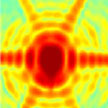 Following extensive research in the field of bionano-interfaces, it is now well understood that the primary interaction of biological species with nanoparticles is strongly dependent to the long-lived protein corona, i.e. a strongly adsorbed protein layer at the surface of nanoparticles. The amount, composition, and exposure site of the associated proteins in the long-lived protein corona can define the biological response to the nanoparticles and hence reveal their biological fate. Scientists have now shown that laser plasmonic heat induction leads to significant changes in the protein corona composition at the surface of gold nanorods.
Following extensive research in the field of bionano-interfaces, it is now well understood that the primary interaction of biological species with nanoparticles is strongly dependent to the long-lived protein corona, i.e. a strongly adsorbed protein layer at the surface of nanoparticles. The amount, composition, and exposure site of the associated proteins in the long-lived protein corona can define the biological response to the nanoparticles and hence reveal their biological fate. Scientists have now shown that laser plasmonic heat induction leads to significant changes in the protein corona composition at the surface of gold nanorods.
Dec 18th, 2013
 Researchers demonstrate a strategy for the fabrication of memristive nanodevices with stable and tunable performance by assembling ferritin monolayer inside a on-wire lithography-generated 12 nm gap. This work work uses the unique high iron loading capacity of Archaeoglobus fulgidus ferritin. The iron loading in the nanocages drastically impacts the performance of the memristive devices. The higher iron loading amount contributes to better memristive performance due to higher electrochemical activity of the ferric complex core.
Researchers demonstrate a strategy for the fabrication of memristive nanodevices with stable and tunable performance by assembling ferritin monolayer inside a on-wire lithography-generated 12 nm gap. This work work uses the unique high iron loading capacity of Archaeoglobus fulgidus ferritin. The iron loading in the nanocages drastically impacts the performance of the memristive devices. The higher iron loading amount contributes to better memristive performance due to higher electrochemical activity of the ferric complex core.
Dec 16th, 2013
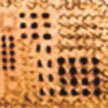 Advances in materials, fabrication strategies and device designs for flexible and stretchable electronics and sensors make it possible to envision a not-too-distant future where ultra-thin, flexible circuits based on inorganic semiconductors can be wrapped and attached to any imaginable surface, including body parts and even internal organs. Robotic technologies will also benefit as it becomes possible to fabricate electronic skin ('e-skin') that, for instance, could allow surgical robots to interact, in a soft contacting mode, with their surroundings through touch.
Advances in materials, fabrication strategies and device designs for flexible and stretchable electronics and sensors make it possible to envision a not-too-distant future where ultra-thin, flexible circuits based on inorganic semiconductors can be wrapped and attached to any imaginable surface, including body parts and even internal organs. Robotic technologies will also benefit as it becomes possible to fabricate electronic skin ('e-skin') that, for instance, could allow surgical robots to interact, in a soft contacting mode, with their surroundings through touch.
Nov 15th, 2013
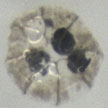 Advances in micro- and nanoscale engineering in the medical field have led to the development of various robotic designs that one day will allow a new level of minimally invasive medicine. These micro- and nanorobots will be able to reach a targeted area, provide treatments and therapies for a desired duration, measure the effects and, at the conclusion of the treatment, be removed or degrade without causing adverse effects. Ideally, all these tasks would be automated but they could also be performed under the direct supervision and control of an external user.
Advances in micro- and nanoscale engineering in the medical field have led to the development of various robotic designs that one day will allow a new level of minimally invasive medicine. These micro- and nanorobots will be able to reach a targeted area, provide treatments and therapies for a desired duration, measure the effects and, at the conclusion of the treatment, be removed or degrade without causing adverse effects. Ideally, all these tasks would be automated but they could also be performed under the direct supervision and control of an external user.
Nov 13th, 2013
 Theranostics - a combination of the words therapeutics and diagnostics - describes a treatment platform that combines a diagnostic test with targeted therapy based on the test results, i.e. a step towards personalized medicine. Theranostic nanomedicine has the potential for simultaneous and real time monitoring of drug delivery, trafficking of drug and therapeutic responses. Researchers have now demonstrated for the first time a MRI-visual order-disorder micellar nanostructures for smart cancer theranostics.
Theranostics - a combination of the words therapeutics and diagnostics - describes a treatment platform that combines a diagnostic test with targeted therapy based on the test results, i.e. a step towards personalized medicine. Theranostic nanomedicine has the potential for simultaneous and real time monitoring of drug delivery, trafficking of drug and therapeutic responses. Researchers have now demonstrated for the first time a MRI-visual order-disorder micellar nanostructures for smart cancer theranostics.
Nov 12th, 2013
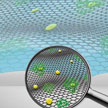 Material science is having a renewed influence on bioelectronics design beyond the incorporation of new functional nanomaterials. This newly established cooperation opens new windows for bioelectronics research, especially for fabricating flexible and smart devices. Recent advances in graphene research provide various possibilities to enhance performance characteristics and current approaches to design new bio-devices. Especially, smart and flexible bioelectronics on graphene has emerged as a new frontier in this area.
Material science is having a renewed influence on bioelectronics design beyond the incorporation of new functional nanomaterials. This newly established cooperation opens new windows for bioelectronics research, especially for fabricating flexible and smart devices. Recent advances in graphene research provide various possibilities to enhance performance characteristics and current approaches to design new bio-devices. Especially, smart and flexible bioelectronics on graphene has emerged as a new frontier in this area.
Oct 31st, 2013
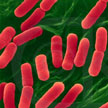 As the use of antibiotics increases for medical, veterinary and agricultural purposes, the increasing emergence of antibiotic-resistant strains of pathogenic bacteria is an unwelcome consequence. The incidence of the multidrug resistance (MDR) of bacteria which cause infections in hospitals/intensive care units is increasing, and finding microorganisms insensitive to more than 10 different antibiotics is not unusual. The emergence of superbugs has made it imperative to search for novel methods, which can combat the microbial resistance. Thus, application of nanotechnology in pharmaceuticals and microbiology is gaining importance to prevent the catastrophic consequences of antibiotic resistance.
As the use of antibiotics increases for medical, veterinary and agricultural purposes, the increasing emergence of antibiotic-resistant strains of pathogenic bacteria is an unwelcome consequence. The incidence of the multidrug resistance (MDR) of bacteria which cause infections in hospitals/intensive care units is increasing, and finding microorganisms insensitive to more than 10 different antibiotics is not unusual. The emergence of superbugs has made it imperative to search for novel methods, which can combat the microbial resistance. Thus, application of nanotechnology in pharmaceuticals and microbiology is gaining importance to prevent the catastrophic consequences of antibiotic resistance.
Sep 10th, 2013
 Numerous previous research results have shown that gold nanorods (Au NRs) are able to effectively kill tumors upon irradiation with high laser doses, leading to hyperthermia-induced destruction of cancer cells (photodynamic therapy, PTT). In new work, researchers have demonstrated for the first time that bare gold nanorods alone can exert unprecedented photodynamic therapeutic (PDT) effects to result in cancer cellular deaths at low laser doses. Moreover, it appears that Au NRs-mediated PDT effects are far more effective in destruction of tumors in mice than the Au NRs-mediated PTT effects.
Numerous previous research results have shown that gold nanorods (Au NRs) are able to effectively kill tumors upon irradiation with high laser doses, leading to hyperthermia-induced destruction of cancer cells (photodynamic therapy, PTT). In new work, researchers have demonstrated for the first time that bare gold nanorods alone can exert unprecedented photodynamic therapeutic (PDT) effects to result in cancer cellular deaths at low laser doses. Moreover, it appears that Au NRs-mediated PDT effects are far more effective in destruction of tumors in mice than the Au NRs-mediated PTT effects.

 Subscribe to our Nanotechnology Spotlight feed
Subscribe to our Nanotechnology Spotlight feed





